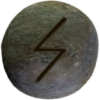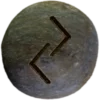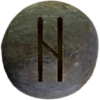Last Updated on May 30, 2025
Table of Contents


Overview
Midsummerblót (pronounced MID-suh-mur-bloht) refers to an ancient Norse pagan ritual held around the summer solstice. The word blót (pronounced bloht) means “sacrifice” or “offering.” Midsummerblót honors the height of light and fertility. Farmers give thanks for crops and ask for continued prosperity. Warriors seek strength. Families mark this time with fire, feasting, and song.
This ritual belongs to a series of seasonal blóts tied to the solar cycle. It takes place near the summer solstice, often on June 21st. The celebration centers on the sun’s power at its peak. Bonfires represent solar fire. Light drives away evil, encourages crops, and renews life. Fire is sacred.
Ritual Structure and Symbols
Midsummerblót usually unfolds in three parts. First comes purification. Participants cleanse themselves in sacred waters or by smoke. This step clears the spirit and prepares the body. Clean clothes and simple foods begin the process.
Second is the offering. People sacrifice food, drink, or animals to spirits or deities. These offerings often go to gods of fertility, light, or strength. Freyr and Sunna (personification of the sun) receive many of these. The gods bless the offerings in return. People also dedicate personal tokens—such as carved wood or stones.
The third part is feasting and games. Roasted meat, ale, bread, and fruit make up the shared meal. Bonfires burn long into the night. Fire leaping, dancing, and music follow. The feast bonds the community. Joy marks the hope of good harvests and long life.
Symbols hold deep meaning during Midsummerblót. The sunwheel (a spinning cross) symbolizes the sun’s journey. Oak branches appear often. Oak trees resist fire and attract lightning—both signs of divine favor. Mead serves as a sacred drink. Each item reflects connection to nature and divine forces.
Runes might be carved during the ritual. People use these for blessings, health, or future insight. The rune Sowilō (ᛋ), linked to the sun, often appears. It stands for light, success, and energy.
Historical Mentions and Legacy
While direct records of Midsummerblót are rare, references to midsummer rituals appear in sagas. The Saga of Olaf Tryggvason tells of efforts to suppress midsummer sacrifices during Christianization. These sacrifices often involved feasts and toasts to the old gods. Some traditions survived by blending into folk festivals.
In Heimskringla, Snorri Sturluson describes seasonal blóts. He explains that sacrifices marked seasonal shifts—especially the beginning of summer and winter. Though not naming Midsummerblót directly, these descriptions match its themes.
Medieval Christian sources condemned midsummer rites. Church authorities tried to erase them or convert them into Saint John’s Day celebrations. This feast, held on June 24th, closely follows the solstice. In some areas, people kept older customs under new names.
Modern festivals across Scandinavia echo ancient Midsummerblót practices. Sweden celebrates Midsommar with dancing around maypoles, feasting, and songs. Iceland marks Sumarsólstöður with music and bonfires. Though these events lack direct sacrificial rites, their timing and spirit preserve older rhythms.
Today, some groups revive Midsummerblót in reconstructed forms. These include fire ceremonies, toasts, and nature walks. While modern practices differ from ancient ones, the focus on solar energy, gratitude, and community endures.
Midsummerblót remains a symbol of life’s brightness. It marks the sun’s reign, the joy of growing things, and the bonds between people and the world.
Runes Associated with Midsummerblót
Two Elder Futhark runes tied to Midsummerblót are Sowilō (ᛋ) and Jēra (ᛃ). ![]()
Sowilō (pronounced SOH-wee-loh) means “sun.” It represents light, clarity, and success. People carve this rune during Midsummerblót to honor the sun’s peak. It brings energy and sharpens vision. Sowilō also guides travelers and strengthens resolve.
Jēra (pronounced YEH-rah) means “year” or “harvest.” It signals reward for effort. This rune reflects the growing cycle. During Midsummerblót, people mark Jēra to celebrate crops and expect good yields. It reminds them that nature returns what people sow.
These runes often appear on wood, bone, or stone. Each carries deep seasonal meaning. Sowilō shows strength in heat and fire. Jēra reveals patience and balance in nature’s rhythm. Together, they reflect summer’s core message: action and reward.
Both runes fit Midsummerblót’s purpose—praise the sun, thank the earth, and walk with purpose.
Its Importance in Asatru
Midsummerblót holds strong meaning for modern Asatruar. They gather to mark the sun’s power, and thank the gods for light, growth, and strength. Fire circles, toasts, and offerings form the heart of the ritual. Many honor deities like Freyr, Sól, and Thor.
Feasting follows the offering. People share food, mead, and stories. Bonfires burn through the night. Children join in dancing and games. Elders speak of cycles and family ties.
Midsummerblót renews bonds between people, gods, and nature. The sun guides them. Earth feeds them. Community supports them. This ritual helps Asatruar walk with awareness and respect.
They do not see this as a reenactment. They live the moment as sacred time.


